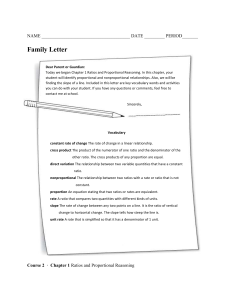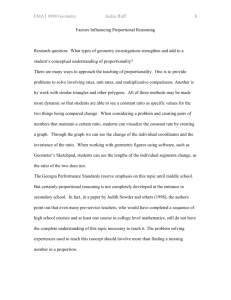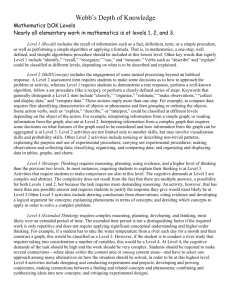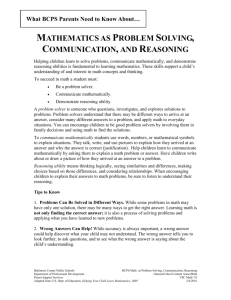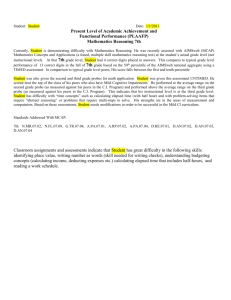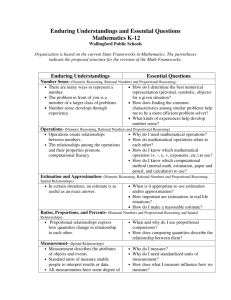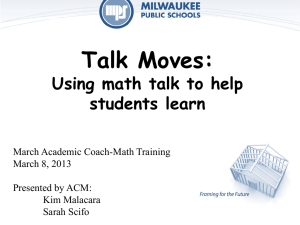Powerpoint Presentaion
advertisement
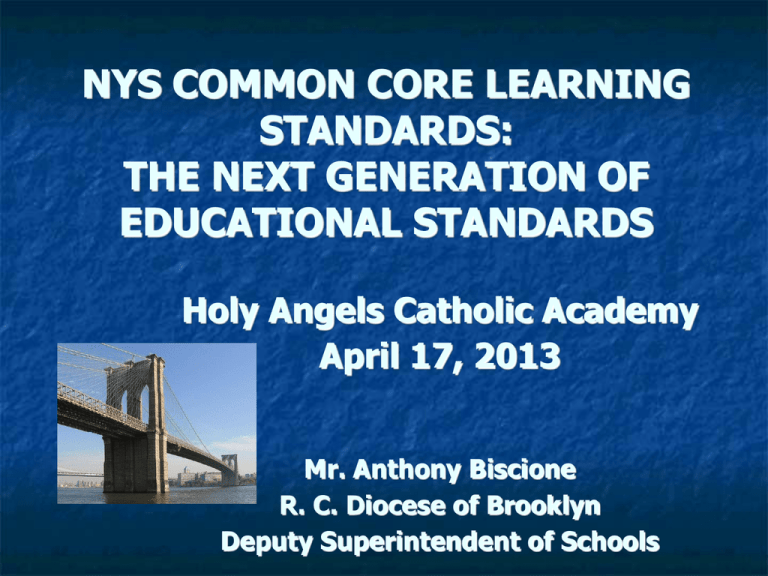
NYS COMMON CORE LEARNING STANDARDS: THE NEXT GENERATION OF EDUCATIONAL STANDARDS Holy Angels Catholic Academy April 17, 2013 Mr. Anthony Biscione R. C. Diocese of Brooklyn Deputy Superintendent of Schools As we begin…. How has education changed? Something to think about… “Are we preparing students for their future or our past?” David Thornburg Standards: The Next Generation Why the Common Core? Where can I find the Common Core State Standards? What will shift and what will be different in 2012? Overarching Question Why do we have Common Core State Standards? It is all about…. College and Career Readiness Uniformity Globalization Common Core State Standards Initiative Preparing America’s Students for College and Career Readiness in the 21st Century Led by the Council of Chief State Officers (CCSSO) and the National Governors Association (NGA). Focus on English Language Arts and Mathematics linking Social Studies, Science and the Technology. Supported by national teacher professional organizations. Studied NAEP results and high performing countries. Core Standards Movement • • • Movement towards greater focus and coherence Movement toward “fewer standards” and more “focused standards” Movement toward “clarity” and “specificity” Criticism of the Current Curriculum… “A mile wide and an inch deep” Important to note… “No set of grade-specific standards can truly reflect the great variety in abilities, needs, learning rates and achievement levels of students in any given classroom. However, the Common Core Standards do provide clear signposts along the way to the goal of college and career readiness for all students.” Introduction to Common Core State Standards CURRICULUM ….every learning activity that a child takes part in – in and out of school. …includes all the resources that are used. ….includes the tools of technology. More importantly…. The Common Core State Standards are not new names for old ways of doing business. They are a call to take the next step….. ……the next generation! The standards represent an evolution – that are the starting point, they are not an endpoint! HISTORICAL DEVELOPMENT Standards movement 1990’s Resulted in the NYS Learning Standards and the New York State Testing program Movement toward application Listening DBQ’s Science Station Applying and Communicating Mathematical Concepts and Skills Let’s take a look…… ELA Grades PreK - 5 ANCHORS Reading for Information and Literature Key Ideas and Details Craft and Structure Integration of Knowledge and Ideas Range of Reading and Text Complexity Foundational Skills Writing Text Types and Purpose Production and Distribution of Writing Research to Build and Present Knowledge Range of Writing Speaking and Listening Comprehension and Collaboration Presentation of Knowledge and Ideas Language Conventions of Standard English Knowledge of Language Acquisition of Academic Vocabulary ELA Grades 6 - 12 Connections to Science, Social Studies and Technical Subjects Supplement the content Every teacher is a reading/language arts teacher Shifts in ELA and Literacy 1. Balancing Informational and Literary Text 2. Building Knowledge in the Discipline 3. Staircase of Complexity 4. Text-Based Answers 5. Writing From Sources 6. Academic Vocabulary “Our students need to read like detectives and write like investigative reporters.” Authors of the Common Core 18 STANDARDS FOR MATHEMATICAL PRACTICE K - 12 1. Make sense of problems and persevere in solving them. 2. Reason abstractly and quantitatively. 3. Construct viable arguments and critique the reasoning of others. 4. Model with mathematics 5. Use appropriate tools strategically. 6. Attend to precision. 7. Look for and make use of structure. 8. Look for and express regularity in repeated reasoning. DOMAINS K – 5 Domains CC = Counting and 6 – 8 Domains Cardinality (K) RR = Ratios and OA = Operations and Proportional Algebraic Thinking Relationships (6-7) NBT = Number Operations NS = The Number in Base Ten System NF = Number and Operations – Fractions (3-5) EE = Expressions and Equations MD = Measurement and F = Functions (8) Data G = Geometry G = Geometry SP = Statistics and Probability Priorities in Math Grade K–2 3–5 6 7 8 Priorities in Support of Rich Instruction and Expectations of Fluency and Conceptual Understanding Addition and subtraction, measurement using whole number quantities Multiplication and division of whole numbers and fractions Ratios and proportional reasoning; early expressions and equations Ratios and proportional reasoning; arithmetic of rational numbers Linear algebra 21 Shifts in Mathematics 1. 2. 3. 4. 5. 6. Focus Coherence Fluency Deep Understanding Applications Dual Intensity Essence of mathematics…. “The standards stress not only procedural skill but also conceptual understanding, to make sure students are learning and absorbing the critical information they need to succeed at higher levels - rather than the current practices by which many students learn enough to get by on the next test, but forget it shortly thereafter, only to review again the following year.” Introduction to the Common Core State Standards The common core is calling us to greater... DEPTH RELEVANCE RIGOR Bloom’s Taxonomy Evaluation Creating Synthesis Evaluating Analysis Analyzing Application Applying Comprehension Understanding Knowledge Remembering What does the future hold? “If students don’t develop the habit of critical, analytical thinking, they will never achieve meaningful understanding. A head full of scientific facts and ideas is not enough: The ability to think critically gives these ideas meaning and allows them to flourish and grow.” Science Class Magazine Referencing the foundation of the next generation What will change? What will stay the same? Attendance at school is, and remains, an important indicator of academic success. Homework may look different. Instruction should be more student centered Assessments will look different. Life Long Learning will be required – for everyone! “Nothing will change unless attitudes change.” Shifts in Questions to Ask Your Children Shift from questions that do not foster critical thinking – What did you get on the test today? What did you get for an answer? How did your teacher tell you to do it? To questions that promote reasoning and understanding – What questions did you ask at school today? Can you explain your reasoning? Can you think of another way to do it? What does this make you think about? How do you know that? Can you show me what you mean? When did we do something like this? What will be required… “Any thing that can be done with technology, will be done with technology. Jobs of the future will require people that can think creatively, ask the big questions the new questions - and think outside the box.” Howard Gardner For more information, go to: www.p12.nysed.gov/ciai/common_core_standards/ or www.corestandards.org/ or www.engageny.org or www.parcconline.org Contact information: Anthony Biscione Deputy Superintendent abiscione@rcdob.org

